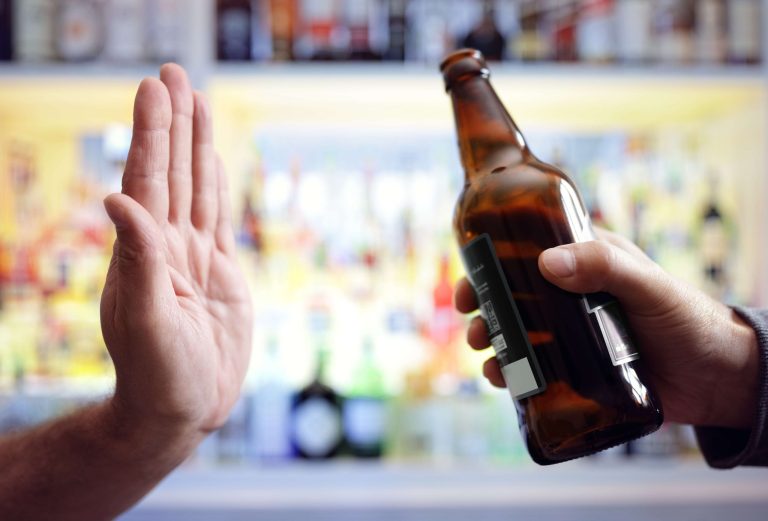Alcoholic Ketoacidosis StatPearls NCBI Bookshelf
During starvation, there is a decrease in insulin secretion and an increase in the production of counter-regulatory hormones such as glucagon, catecholamines, cortisol, and growth hormone. Hormone-sensitive lipase is normally inhibited by insulin, and, when insulin levels fall, lipolysis is up-regulated, causing release of free fatty acids from peripheral adipose tissue. Generally, the physical findings relate to volume depletion and chronic alcohol abuse. Typical characteristics of the latter may include rhinophyma, tremulousness, hepatosplenomegaly, peripheral neuropathy, gynecomastia, testicular atrophy, and palmar erythema. The patient might be tachycardic, tachypneic, profoundly orthostatic, or frankly hypotensive as a result of dehydration from decreased oral intake, diaphoresis, and vomiting.
Alcoholic ketoacidosis may lead to gastrointestinal bleeding. The greatest threats to patients with alcoholic ketoacidosis are marked contraction in extracellular fluid volume (resulting in shock), hypokalaemia, hypoglycaemia, and acidosis. To treat alcoholic ketoacidosis, doctors give people thiamine (vitamin B1) by vein (intravenously) followed by intravenous saline and glucose solution. Other vitamins and minerals, such as magnesium, are added to the saline solution. If a person is already malnourished due to alcoholism, they may develop alcoholic ketoacidosis.
Clinical Features
Neurologically, patients are often agitated but may occasionally present lethargic on examination. Alcohol withdrawal, in combination with nausea alcoholic ketoacidosis and vomiting, makes most patients agitated. However, if an AKA patient is lethargic or comatose, an alternative cause should be sought.
Clinicians underestimate the degree of ketonemia if they rely solely on the results of laboratory testing. You can prevent alcoholic ketoacidosis by limiting your alcohol intake. You can learn how to reduce your alcohol intake or eliminate it altogether. Joining a local chapter of Alcoholics Anonymous may provide you with the support you need to cope.
History
Group meetings provide support for people trying to quit drinking. Meetings are widely available at little-to-no cost in most communities. Support groups can be a valuable source of support and can be combined with medication and therapy. Calcium oxalate crystals in the urine also suggests ethylene glycol poisoning.
- Electrolyte abnormalities are common to this condition and can precipitate fatal cardiac arrhythmias [3, 4].
- Then an IV infusion of 5% dextrose in 0.9% saline solution is given.
- The patient might be tachycardic, tachypneic, profoundly orthostatic, or frankly hypotensive as a result of dehydration from decreased oral intake, diaphoresis, and vomiting.
- Bedside testing reveals a low or absent breath alcohol, normal blood sugar, metabolic acidosis, and the presence of urinary ketones, although these may sometimes be low or absent.
- People with this condition are usually admitted to the hospital, often to the intensive care unit (ICU).
- Symptoms of diabetic ketoacidosis include nausea, vomiting, abdominal pain, and a characteristic…
Plasma glucose levels are usually low or normal, but mild hyperglycemia sometimes occurs. This is why diagnosis and subsequent treatment can sometimes be challenging, but it’s crucial to receive a proper and timely diagnosis to obtain the correct treatment. The patient should have blood glucose checked on the initial presentation. The next important step in the management of AKA is to give isotonic fluid resuscitation. Dextrose is required to break the cycle of ketogenesis and increase insulin secretion.
BOX 1 PRESENTING FEATURES OF AKA
The test is free, confidential, and no personal information is needed to receive the result. People who drink large quantities of alcohol may not eat regularly. Not eating enough or vomiting can lead to periods of starvation. Each of these situations increases the amount of acid in the system. They can also reduce the amount of insulin your body produces, leading to the breakdown of fat cells and the production of ketones. Glucose comes from the food you eat, and insulin is produced by the pancreas.

An altered level of consciousness should prompt consideration of alternative diagnoses such as hypoglycaemia, seizures, sepsis, thiamine deficiency, or head injury. Arterial blood gas and biochemistry studies reveal a raised anion gap metabolic acidosis without evidence of lactic or diabetic ketoacidosis. The reversal of ketosis and vigorous rehydration are central in the management of AKA. In addition to isotonic fluid replacement, dextrose-containing intravenous fluids are needed. Intravenous dextrose-containing fluid infusions should be stopped once the bicarbonate levels have reached mEq/L and the patient is tolerating oral intake. This typically occurs 8 to 16 hours after the initiation of treatment.2 Alcohol withdrawal in these patients should be aggressively managed with intravenous benzodiazepines.
Treatment
For patient education information, see the Mental Health and Behavior Center, as well as Alcoholism and Alcohol Intoxication. In contrast to diabetic ketoacidosis, the predominant ketone body in AKA is β-OH. Routine clinical assays for ketonemia test for AcAc and acetone but not for β-OH.
Peterlee police failed in death of mentally ill man in cell – BBC.com
Peterlee police failed in death of mentally ill man in cell.
Posted: Tue, 10 Aug 2021 07:00:00 GMT [source]
